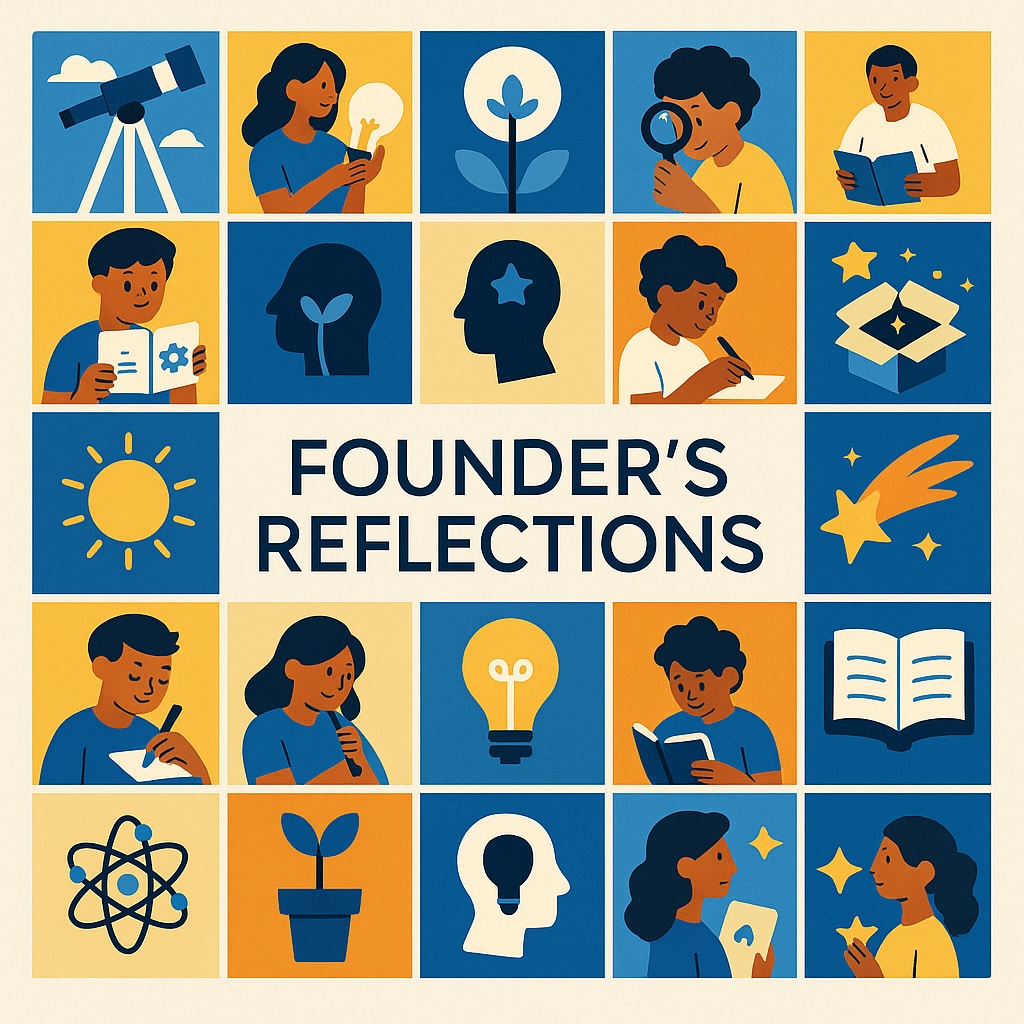
Autumn is a season of gentle transformation — leaves turning amber and gold, conkers thudding softly to the ground, and acorns tapping the forest floor like nature’s own percussion.
It’s the perfect time to pause and wonder. Each sound or change holds an invitation:
“What’s happening here? Why does it happen? What could we find if we looked closer?”
This is the essence of curiosity — the spark that fuels every learner’s journey.
Curiosity isn’t simply about finding answers. It’s about noticing, questioning, and staying open to discovery — even when certainty never comes.
For children learning at home, curiosity transforms ordinary days into learning adventures. A puddle becomes an experiment in reflection, a leaf becomes a study in symmetry, and a question like “Where do clouds go at night?”becomes the start of a week-long exploration.
Encouraging curiosity means giving learners permission to explore without fear of getting it wrong. When we celebrate their wonderings as much as their answers, we build resilience, creativity, and confidence — qualities that last long after a worksheet is forgotten. Sometimes, curiosity even brings joy and laughter back into learning.
One of the simplest ways to nurture curiosity is through observation.
Take a walk and look closely at tree bark — run your fingers over the grooves, notice how the texture changes from tree to tree. Try making bark or leaf rubbings using wax crayons, or sort fallen conkers by size, shine, or weight. No structured lesson needed — just a minute of curiosity before you resume your busy day.
These playful, tactile experiences help learners — and we are all learners — connect the senses with thought: a cornerstone of scientific thinking.
Parents often ask how to bring more “science” into home learning. The truth is, curiosity is science. It begins with noticing, leads to a question, and ends in exploration.
By asking, “What happens if…?” children are already thinking like scientists — learning through play, observation, and reflection.
This autumn, the sky itself invites exploration.
The Harvest Moon, also known as the first supermoon of 2025, rises larger and brighter than usual, bathing the night in golden light. It’s followed by the autumnal equinox, when day and night stand in perfect balance — and soon after, the Beaver Moon in November continues the seasonal story.
Both are natural prompts for curiosity:
“Why does the moon look so big?”
“What makes the days grow shorter after September?”
Take a few minutes outside together — look up, sketch what you see, or write a simple observation in a journal. Encourage learners to describe not only what they notice, but how it makes them feel. Science and self-expression can share the same sky.
When curiosity becomes a habit, learning becomes a way of life.
Homes that nurture curiosity are filled with questions, laughter, and the gentle rhythm of discovery.
Whether it’s a conker collection, a moon sketch, or a moment of wonder on a windy walk, every small act of noticing helps a learner grow into a thinker, a doer, and a dreamer.
As we move through this season of change, may we all keep asking —
“What might we find if we look a little closer?”